
Most DIY jobs involve shopping for materials, but overloading your ute to transport them home could be a recipe for disaster.
According to the Victorian roads authority VicRoads, it gets about 700 callouts a year to remove debris on the road caused by poorly secured loads.
If something falls off your ute and injures a person, it’s your responsibility and you’ll likely be hit with hefty fines.
We checked with experts to find the best way to secure a load. It’s not just about ensuring it gets home, it’s about getting it all there safely.
You can use these methods to move furniture, too. If it flies off your ute and causes harm, you’ll be just as liable.
Ratchet straps
The first rule in safely securing a load is to buy at least four heavy-duty 4.5m ratchet straps for a minimum 454kg load limit/1360kg break strength.
Rope and bungees are okay if you drive slowly, don’t hit any bumps or have an accident. But these may fail if you have to swerve or make an emergency stop.
Buy heavy-duty ratchet straps (3.2cm or wider) and store them in a box in your cab to protect them from moisture and sunlight.
Wrap flimsy items
DIY jobs can involve hauling lengths of flimsy materials like guttering or conduit. To stop it flopping around or getting damaged on the way home, wrap both ends with shrink wrap, about $13 for a roll.
If buying timber as well, bundle it with the load for added support.
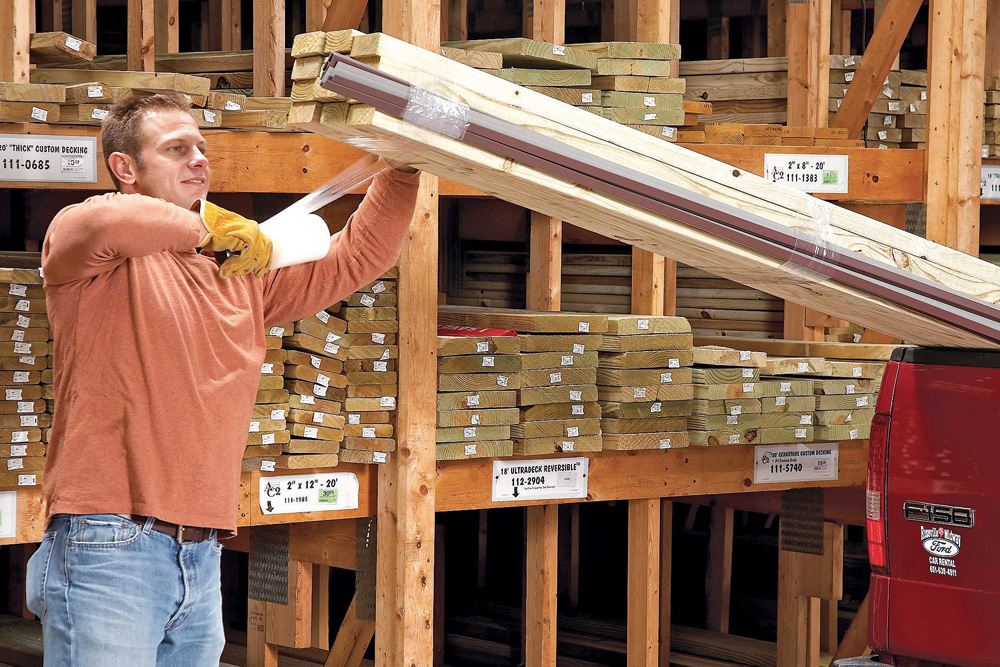
To stop flimsy materials flopping around or getting damaged on the way home, wrap both ends with shrink wrap
Bundle long boards
If you’re carrying a large load of long timber, don’t rest it on a raised gate, as it can’t hold that kind of weight.
Start by laying out two or more ratchet straps along the bottom of the ute bed, then load the longest and heaviest pieces of timber over the straps. Stack shorter lengths on top, then secure the cab end, the middle and the trailing end with the straps.
Next, anchor the bundle to the ute bed with two ratchet straps. Crisscross the straps across the load, attaching one end to the cab anchor rings and the tailgate end to the farthest bundle strap.
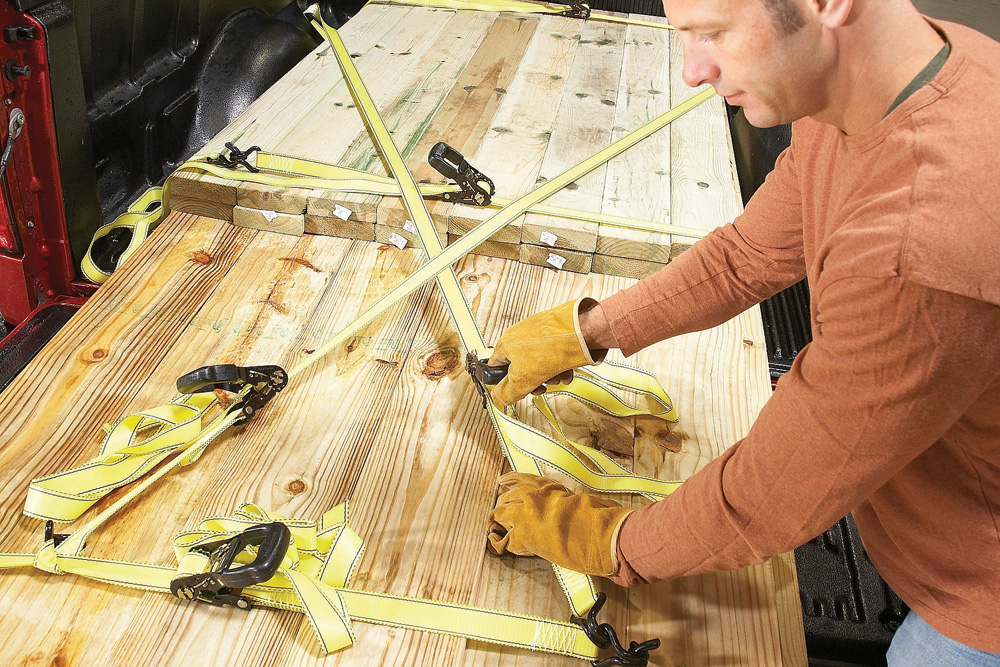
Bundle long boards with ratchet straps
Support plasterboard
If you have a standard-sized tray, you’ll have to haul a large load of sheet goods with the tailgate down.
To safely secure 3000 x 1200mm plasterboard in a 1800mm tray, lay out two ratchet straps across the tray, then check the load limit of your ute and the weight of each sheet.
Next, to help support the overhang and protect the plasterboard from any water or dirt in the tray, lay out at least two 3000 x 90 x 45mm timber lengths.
To protect the plasterboard edges, use scrap cardboard or cardboard corners. Tighten the base straps, then run two straps from the tray’s anchor rings around the back edge of the sheets and down to the bumper.
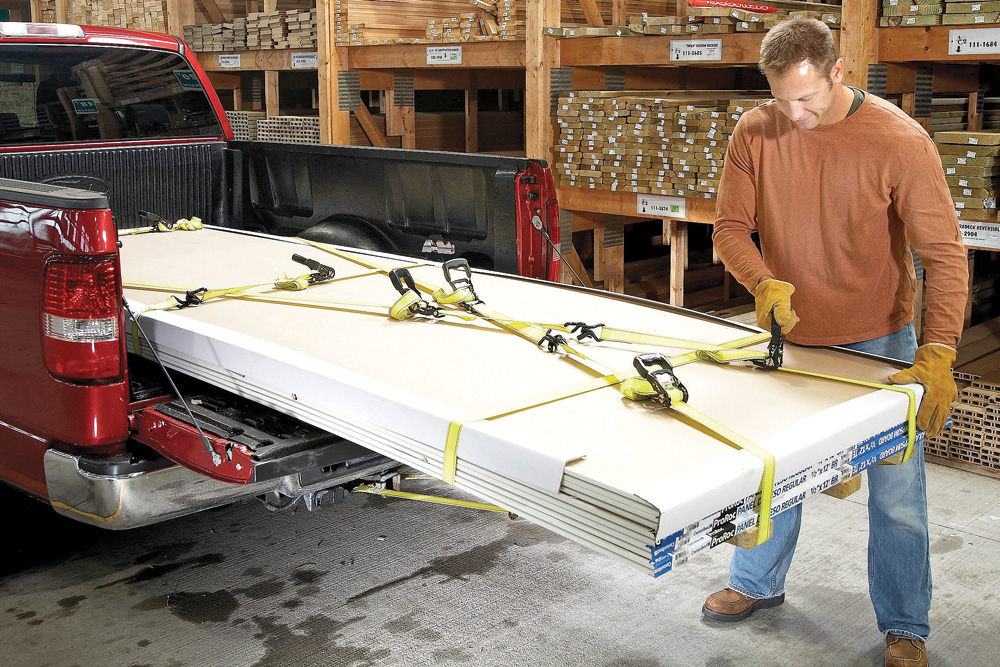
Ensure your load overhang is within state laws and attach a red flag
Netting bulky goods
When you need to transport bundles of light materials such as insulation, it shouldn’t be just thrown in the ute tray in the hope that it will
stay put. It needs to be secured as well. The best way to do this is with a cargo net, which is available from hardware stores. Simply snap the retainer clips into the anchor points on your tray.
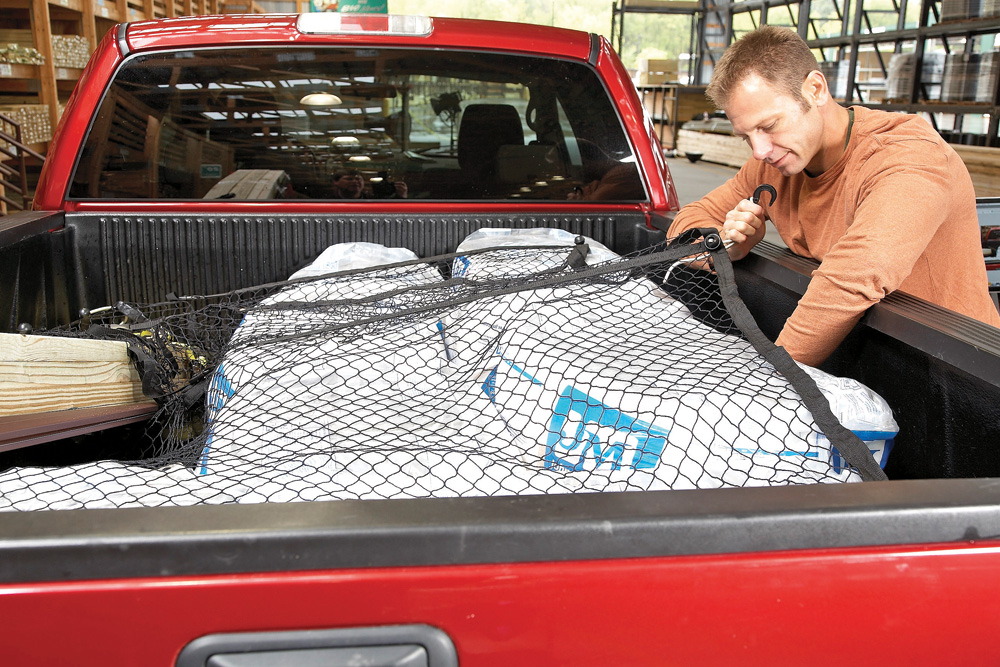
Secure light bundles in your ute tray with netting
Strap light loads
It is safe to rest light items up to 3m in length on the tailgate, but they still have to be held in position even though the longest portion of the load is inside the tray. Use ratchet straps on the bundle in two places and secure each end to the anchor rings on the tray.
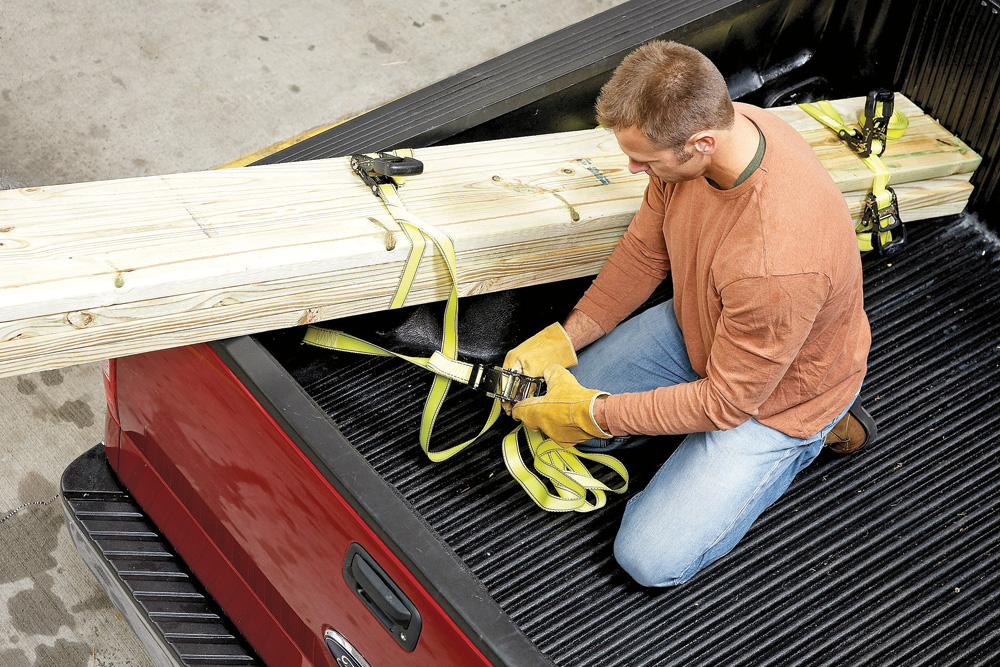
Use ratchet straps on the bundle in two places and secure each end to the anchor rings on the tray
Fly a red flag
After you’ve secured your load, attach a red flag to the end. It’s required by law in many states, so be sure to put several staples in it to prevent it from ripping off. Double-check your state government’s rear overhang limits, as they vary, and some states such as Queensland have tougher guidelines and penalties than others.

